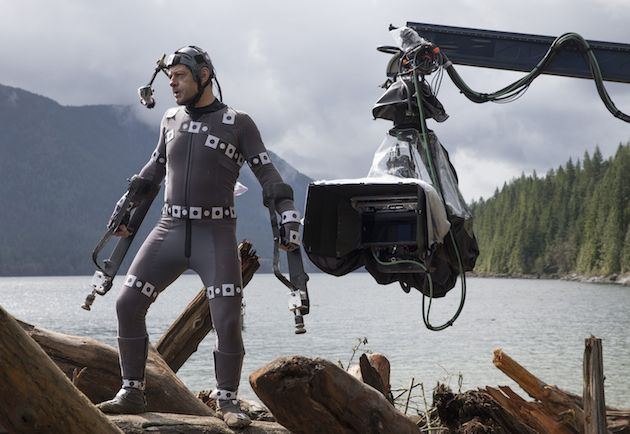 Anne Marie here at the AFI Fest with another special event. Weta Digital, the pioneering VFX company behind some of the biggest blockbusters, including the Marvel franchise, Avatar, and The Hobbit, is celebrating its 20th anniversary this year. In “State of the Art: The Evolution of Weta Digital," Visual Effects Supervisor Dan Lemmon gave audiences a peek behind the digital curtain of Weta Digital’s latest film, Dawn of the Planet of the Apes, to show how the company develops performance capture to assist and augment cinematography.
Anne Marie here at the AFI Fest with another special event. Weta Digital, the pioneering VFX company behind some of the biggest blockbusters, including the Marvel franchise, Avatar, and The Hobbit, is celebrating its 20th anniversary this year. In “State of the Art: The Evolution of Weta Digital," Visual Effects Supervisor Dan Lemmon gave audiences a peek behind the digital curtain of Weta Digital’s latest film, Dawn of the Planet of the Apes, to show how the company develops performance capture to assist and augment cinematography.
Weta Digital is probably best known for its motion capture process (dubbed “performance capture” by James Cameron "because they also capture emotions"). Dan Lemmon explained that this evolved from Andy Serkis filming scenes as Gollum twice for The Lord of the Rings, into a sophisticated system called a “Capture Volume,” a cube of space surrounded by infrared cameras that record the actors’ movements. For Dawn of the Planet of the Apes, director Matt Reeves wanted to shoot the apes on location, so a new “portable” version was developed. The result had a profound effect not only on the technology of performance capture, but also on the look of the film--both digital and real.
 Serkis in Dawn of the Planet of the Apes
Serkis in Dawn of the Planet of the Apes
Since Avatar won the Oscar for Best Cinematography in 2009, each subsequent winner has been a VFX-heavy film, so the unspoken question was how Weta Digital interacted with Michael Seresin, the cinematographer of Dawn. Shooting on location allowed Seresin to light the ape actors as he would real characters. Then, Weta Digital could match that lighting on the pixelized primates. In addition, Seresin and Reeves developed a look book, pulling images from The Godfather and grittier 70s films. Dan Lemmon explained that Weta’s job was to mimic Seresin’s intentions, for instance digitally creating the vertigo-inducing helicopter shot for the climax. However, Lemmon also proudly pointed out how Weta Digital improved on Seresin’s vision, whether it was by manipulating the light to capture a digital ape’s eyes, or by adding fake “flaws” to the helicopter shot in order to make the synthetic image more real.
The result of Weta Digital’s collaboration with Seresin is undoubtedly remarkable, and pushes VFX to be accepted as an art, rather than a gimmick. Still, Weta's additions to Seresin's work mark a definite change in the visual landscape of moviemaking. As VFX are integrated from pre-production to filming to post-production and digital effects get clearer, the line between cinematography and visual effects is going to get increasingly muddy.
 Wednesday, July 29, 2015 at 2:40PM
Wednesday, July 29, 2015 at 2:40PM 








